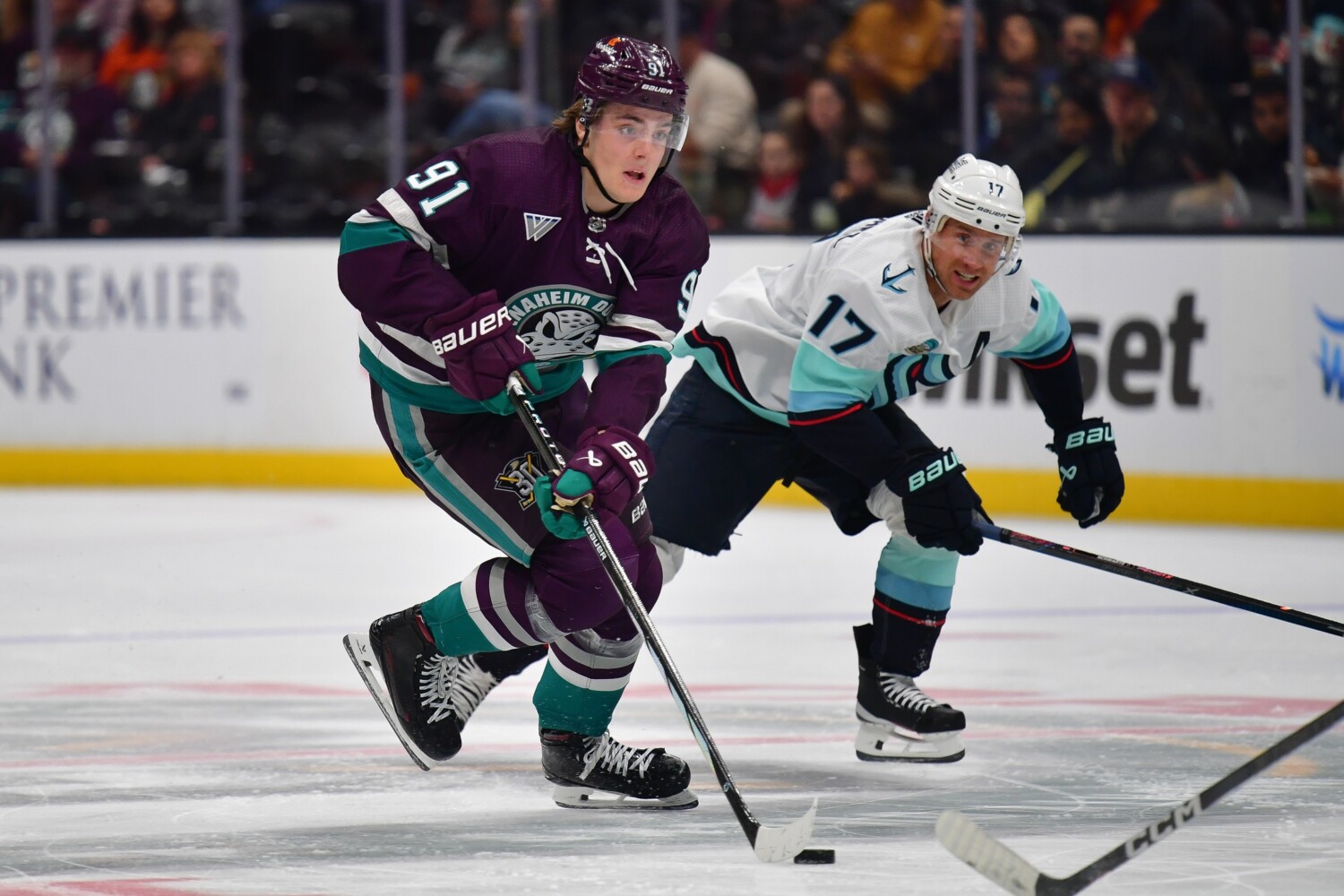The Anaheim Ducks and their general manager, Pat Verbeek, have been making strategic moves to bolster their roster with size and skill through drafting and trades.
In recent years, Verbeek has prioritized larger players in the draft. This was evident in Verbeek’s first NHL Draft in 2022 when the Ducks selected Nathan Gaucher with the 22nd overall pick. At 6’3″ and over 200 pounds, Gaucher fits the mold of a big-bodied center that can provide both offensive production and physical presence.
At 6’2″ and 205 pounds, Leo Carlsson, the second pick in the 2023 NHL Draft, was more of the same. Verbeek went with Carlsson’s tougher two-way play over the more proven goal scorer Adam Fantilli, who ended up being picked 3rd by Columbus. And when Verbeek traded the slick skating Jamie Drysdale for the 6’3″ and 205-pound gritty Boston College forward Cutter Gauthier, it laid bare Verbeek’s overall vision of a bigger, more physical Ducks team.
Finally, in what was somewhat of a surprise pick, showing that Verbeek is not afraid to go off the board with his selections, Anaheim selected Beckett Sennecke with the third overall pick at the 2024 NHL Draft. Sennecke is 6’3″ and 190 pounds now, but he just turned 18 this year and is expected to fill out much of that frame.
Trend Towards Size and Skill
Verbeek has also shown a willingness to acquire players of different sizes and grit on the trade front. The recent acquisition of Ben Meyers from the Colorado Avalanche is a prime example. While not exceptionally large, Meyers is known for his competitive nature and strong skating ability, fitting into Verbeek’s vision of a team that can skate and compete physically. Meyers joins Radko Gudas and Alex Killorn, two veterans known for their sandpaper-style play.
The Ducks’ management has also moved to add size to their defensive corps. The addition of William Lagesson through waivers demonstrates this strategy. Lagesson, described as a defensive defenseman who offers grit and competitiveness, adds much-needed size and toughness to the Ducks’ blueline.
Verbeek’s approach to building the team seems balanced. While prioritizing size, he’s not sacrificing skill or speed. The GM has shown a knack for identifying players who can contribute in multiple ways, such as Frank Vatrano, who combines goal-scoring ability with a strong work ethic.
Looking ahead, Verbeek and the Ducks are focused on constructing a roster that can compete in all aspects of the game. By drafting and trading for players of different sizes, skills, and competitiveness, they’re laying the foundation for a team that can match up physically with opponents while still playing the fast-paced style required in modern NHL hockey.
Fans expect to see more moves aligning with this strategy as the Ducks continue their rebuild. Verbeek’s willingness to make bold decisions and his eye for talent that fits the team’s needs suggests that the Ducks are on a path to becoming a more formidable and well-rounded team in the coming years.



